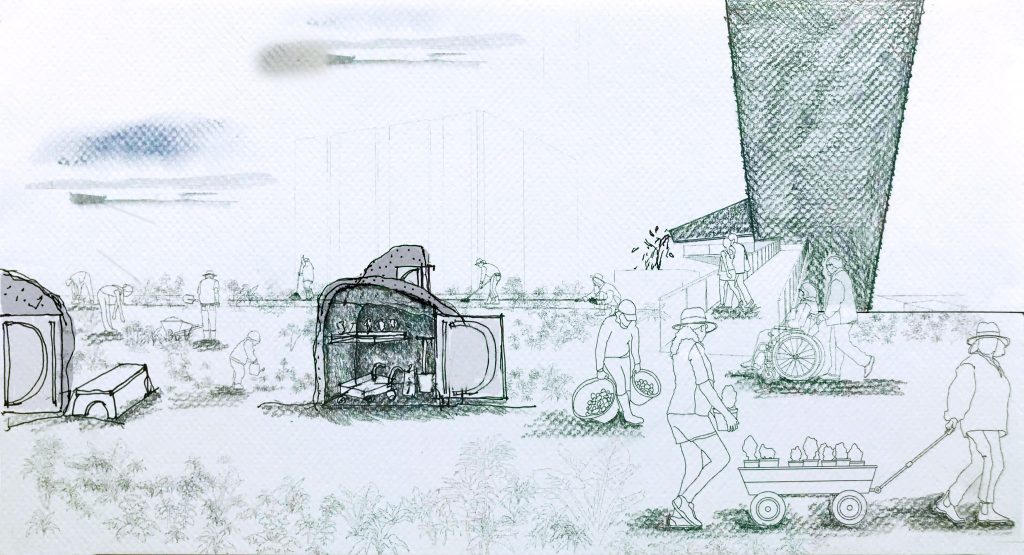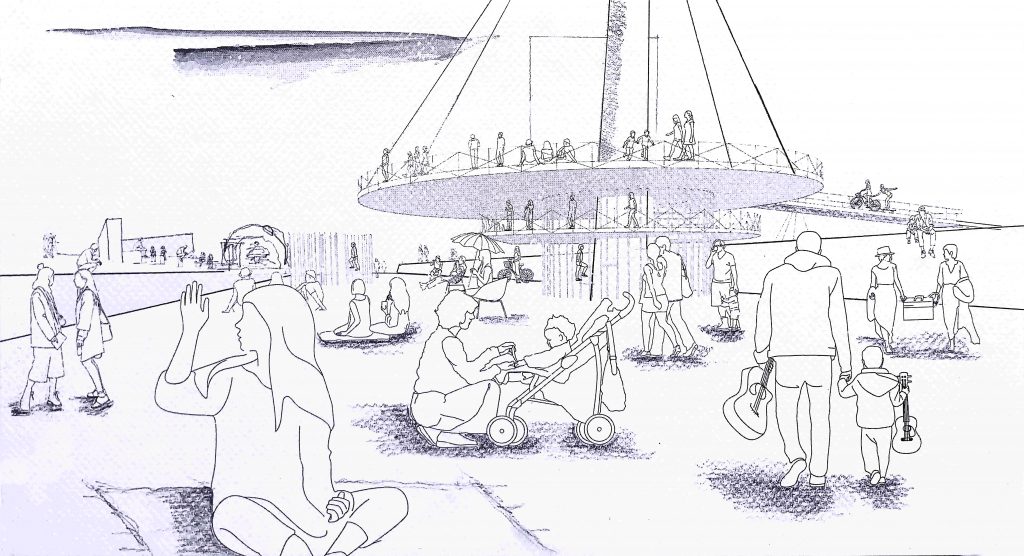MArch thesis project wins Award of Merit in Ottawa Urban Design Awards
By Maria Cook
December 13, 2023

Recent graduate Shirley Chung has won an Award of Merit in the 2023 Ottawa Urban Design Awards for her master’s thesis project.
Chung won in the Student Projects category for Tunneys Pasture: A Park in Ottawa for Artistic Production. Her thesis supervisor was Associate Professor Inderbir Singh Riar.
The project aims to create a city park at Tunney’s Pasture, four kilometres west of Parliament Hill, that reveals aspects of the site history. It offers spaces to bring the community together and ignite public culture and artistic imagination through discovery and making.
“The jury appreciated the thought and creative intent of the design which was well represented in the graphics provided,” according to the City of Ottawa’s announcement. “The project provided a playful and thought-provoking approach to the reuse of historic assets questioning usual forms of regeneration.”
See all the winners here.

“Shirley’s competition panels show only the final architecture — a park with cultural facilities on Tunney’s Pasture — but her project rested heavily on crafts such as silk screening, casting, and hand drawing,” notes Professor Riar. “The advice and influence of Azrieli School staff Mark MacGuigan, Rob Wood, and Steve MacLeod proved pivotal.”
The jury members comprised Anne Bordeleau, director of the Azrieli School of Architecture & Urbanism, Brigitte Shim, co-founder of Shim-Sutcliffe Architects, and Graeme Stewart, principal of ERA Architects.
The 10th instalment of the program honoured exceptional projects in Ottawa completed between September 1, 2021, and August 31, 2023.

Abstract
The new city park is located at Tunney’s Pasture four kilometres west of Parliament Hill and lies on the south bank of the Ottawa River. The 49-hectare site is bounded by the Kichi Zibi Mikan pathway and the Ottawa River to the north, Parkdale Avenue to the east, Scott Street and light rail transit to the south, and the community of Champlain Park to the west.
The park is organized by bands of amenities that promote community interactions and celebrate the site’s cultural heritage. They include a children’s playground, sports area, community gardens, arts studios, spaces for music performance, and the Library and Archives.
The community spaces are placed as cuts or channels in the ground to connect to the earth and the land.
Explorations in making, craft, music, and memories create dialogues with the site, and the park becomes an ever-evolving place for discovery that connects the lines and mesh of ideas in the collaborative process of human action.
Natural light is brought into the underground spaces by skylights that are of the form of the site’s rocks.
On the northern edge of the site, a water tower spouts water for the community gardens. Little structures cast in the shape of the site’s rocks stand in rows in irregular sequence as garden sheds.
Adjacent to the printing studio is a rectangular space for skateboarding. In the winter it converts to a skating rink. On the park’s west border, the wide sidewalk runs along its length to join Scott Street to the Ottawa River Parkway, offering a direct connection to the ski trails in the winter months.
But for now, it is still summer, and you prepare to cool off in the long lap pool. You are happy, the colours of the floral beds, people – some lounging, others walking to a studio or the library or for music; the connected pathways; the bands of activities; the lookout towers, the connection to the ground and the sky; you are just happy that the private developers did not take this one.